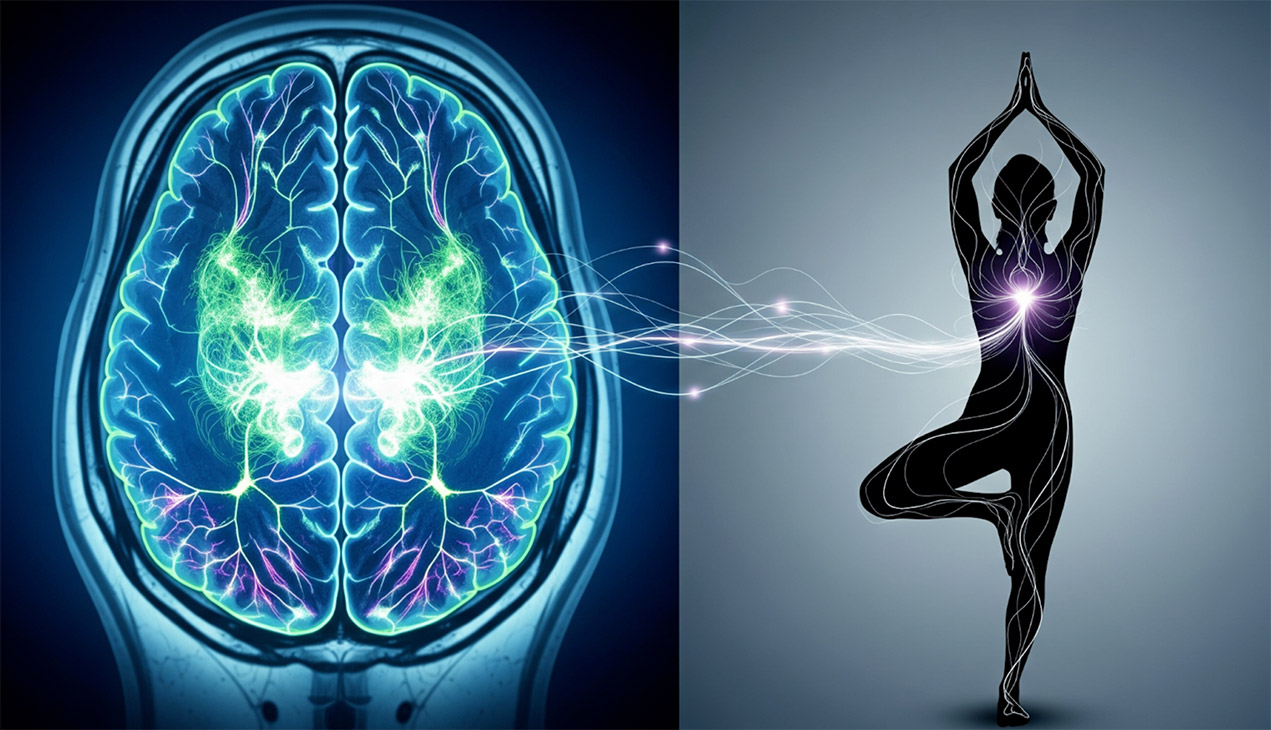When most people think of yoga, they imagine stretching, flexibility, and relaxation. But modern science is revealing something even more profound: yoga doesn’t just change the body—it changes the brain. Through breath, movement, and meditation, yoga activates the brain’s natural ability to grow, adapt, and rewire itself. This process, called neuroplasticity, is one of the most exciting frontiers of mind-body research today.
What Is Neuroplasticity?
Neuroplasticity is the brain’s remarkable capacity to reorganize itself by forming new neural connections throughout life. Far from being fixed, the brain is dynamic and adaptable.
There are two main forms of neuroplasticity:
- Structural plasticity – physical changes in brain structures, such as growth in gray matter volume.
- Functional plasticity – the brain’s ability to shift activity from damaged areas to healthy ones or create new communication pathways.
Neuroplasticity underlies learning, memory, recovery from injury, and even emotional regulation. The more we engage in practices that challenge the mind and body—like yoga—the stronger and healthier our brains can become.

Yoga and the Brain: How the Practice Works
Yoga is not a single activity—it’s a blend of movement (asana), breath regulation (pranayama), meditation, and deep relaxation. Each of these practices influences neuroplasticity in unique ways:
- Meditation and Mindfulness
MRI studies show that meditation increases gray matter density in the hippocampus (linked to memory and learning) and prefrontal cortex (associated with attention and decision-making). At the same time, it reduces activity in the amygdala, the brain’s fear and stress center. - Breathwork (Pranayama)
Slow, controlled breathing stimulates the vagus nerve, promoting balance in the autonomic nervous system. Functional brain imaging suggests pranayama improves connectivity in regions involved in stress regulation and emotional balance. - Asana (Physical Postures)
Beyond flexibility, mindful movement enhances blood circulation, delivering oxygen and nutrients to the brain. Studies suggest yoga asana improves executive functioning—the brain’s ability to plan, focus, and manage tasks. - Yoga Nidra (Yogic Sleep)
Deep relaxation practices like yoga nidra guide the brain into a state between wakefulness and sleep. This state supports memory consolidation and helps reset stress-related neural pathways, fostering healthier brain activity.
What the Science Says
Research is steadily backing up what yogis have long experienced: yoga reshapes the brain.
- Harvard Medical School researchers found that people who practiced meditation for eight weeks showed measurable increases in cortical thickness in areas related to learning and memory.
- A University of Illinois study showed that older adults who practiced yoga performed better on tests of executive function and working memory than those who only did stretching.
- Research on trauma survivors reveals that trauma-sensitive yoga helps regulate the amygdala, reducing hyperarousal and intrusive memories.
- Studies also suggest that regular yoga practice can promote neurogenesis—the birth of new neurons—particularly in the hippocampus, a region vital for memory and emotional regulation.
Why Neuroplasticity Matters
Understanding the brain’s ability to change gives us hope at any stage of life. Yoga enhances neuroplasticity in ways that support:
- Learning and Focus – stronger attention networks improve concentration in work, study, or daily life.
- Resilience – by calming the amygdala and strengthening the prefrontal cortex, yoga builds emotional stability.
- Emotional Balance – regular practice enhances mood regulation and reduces anxiety and depression.
- Healthy Aging – yoga slows brain shrinkage, supports memory, and maintains cognitive sharpness.
For people recovering from trauma, managing stress, or simply wanting to age gracefully, yoga offers a scientifically validated path forward.
How to Boost Neuroplasticity with Yoga
The beauty of yoga is that you don’t need hours a day to see results. Small, consistent practices can make a big difference for your brain:
- Practice Daily Breathwork
- Try alternate nostril breathing or slow belly breathing for 5–10 minutes.
- This balances brain hemispheres and calms the nervous system.
- Move Mindfully
- Instead of rushing through poses, focus on how each movement feels.
- Pay attention to breath and body sensations—this strengthens interoception, the awareness of what’s happening inside your body.
- Include Meditation or Yoga Nidra
- Even 10 minutes of meditation daily can increase gray matter in the brain’s learning centers.
- Yoga nidra can help reset stress pathways and improve sleep quality.
- Learn Something New
- Challenge your brain by trying new sequences or postures.
- Novelty stimulates new neural connections.
- Be Consistent
- Neuroplasticity thrives on repetition. Short, daily practice is more effective than long but infrequent sessions.
Conclusion
Yoga is far more than a physical exercise—it is a powerful practice for reshaping the brain. Through movement, breath, and meditation, yoga taps into the science of neuroplasticity, helping us grow, heal, and adapt at every stage of life.
Every time you step onto your mat, you’re not just strengthening your body—you’re rewiring your brain for focus, resilience, and well-being.
The takeaway is simple and profound: when you practice yoga, you practice possibility.
Disclaimer: The information provided in this article is for educational purposes only and is not intended to replace the advice of your healthcare provider. Always consult your healthcare provider before beginning any new exercise program, including yoga, especially if you have a pre-existing medical condition. While every effort has been made to ensure the accuracy of the information presented, the author and publisher cannot be held responsible for any errors or omissions or for any consequences resulting from the use of this information.
About the Author: Dr. Ashis Das is a physician with a Doctorate in Public Health from the University of London. He is a certified yoga teacher and passionate about social transformation through effective preventive, promotive, and curative practices. Dr. Das has taught yoga to children, adults, and seniors across four continents, blending yoga, yoga therapy, Ayurveda, and music therapy. He has collaborated with global agencies like WHO, Unicef, and the World Bank, assisting several countries in experimenting with innovative health solutions. Dr. Das generates and synthesizes scientific evidence on yoga and related practices for health and well-being, and has published more than 100 scientific articles and reports. He can be followed on Facebook and LinkedIn.

